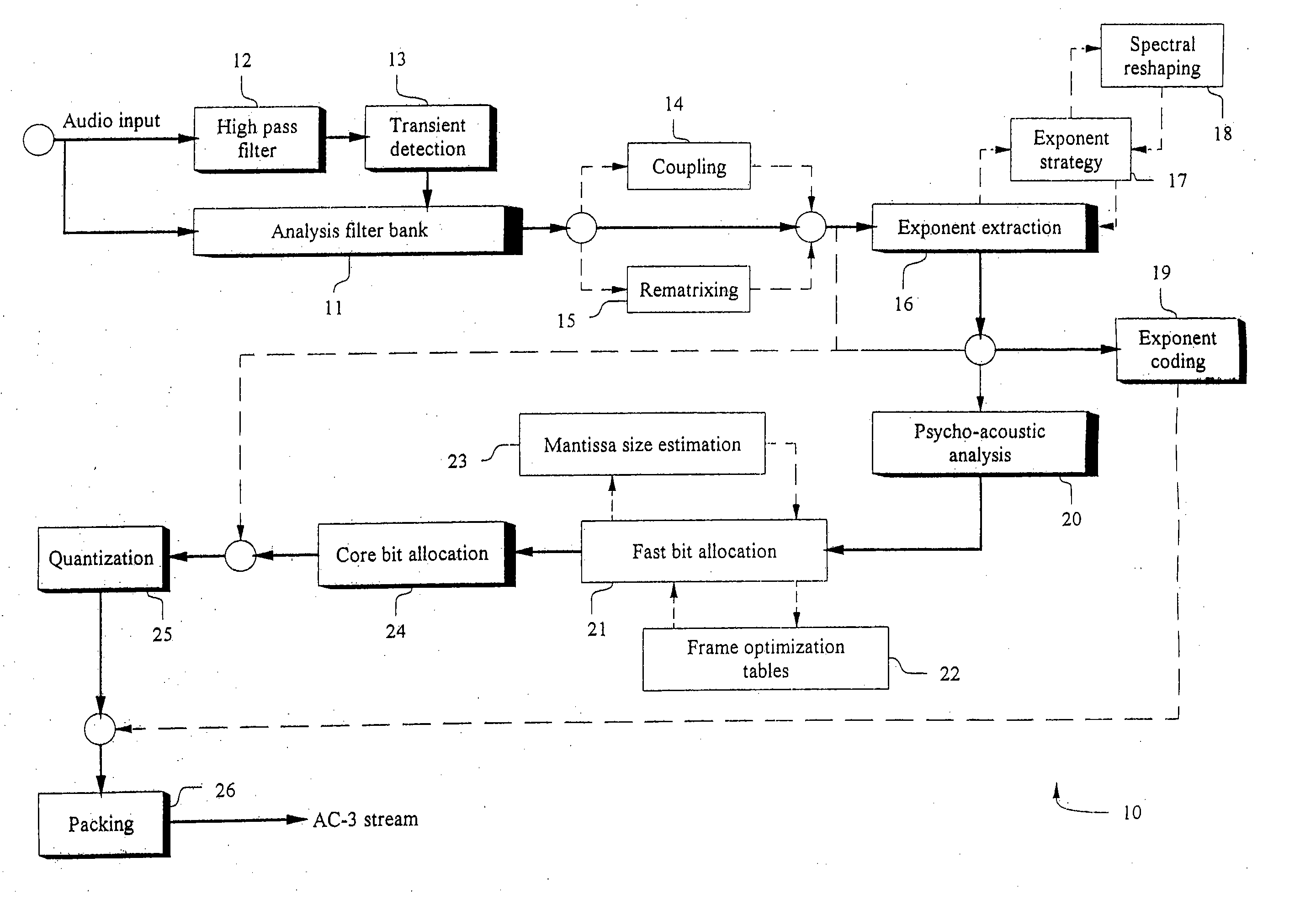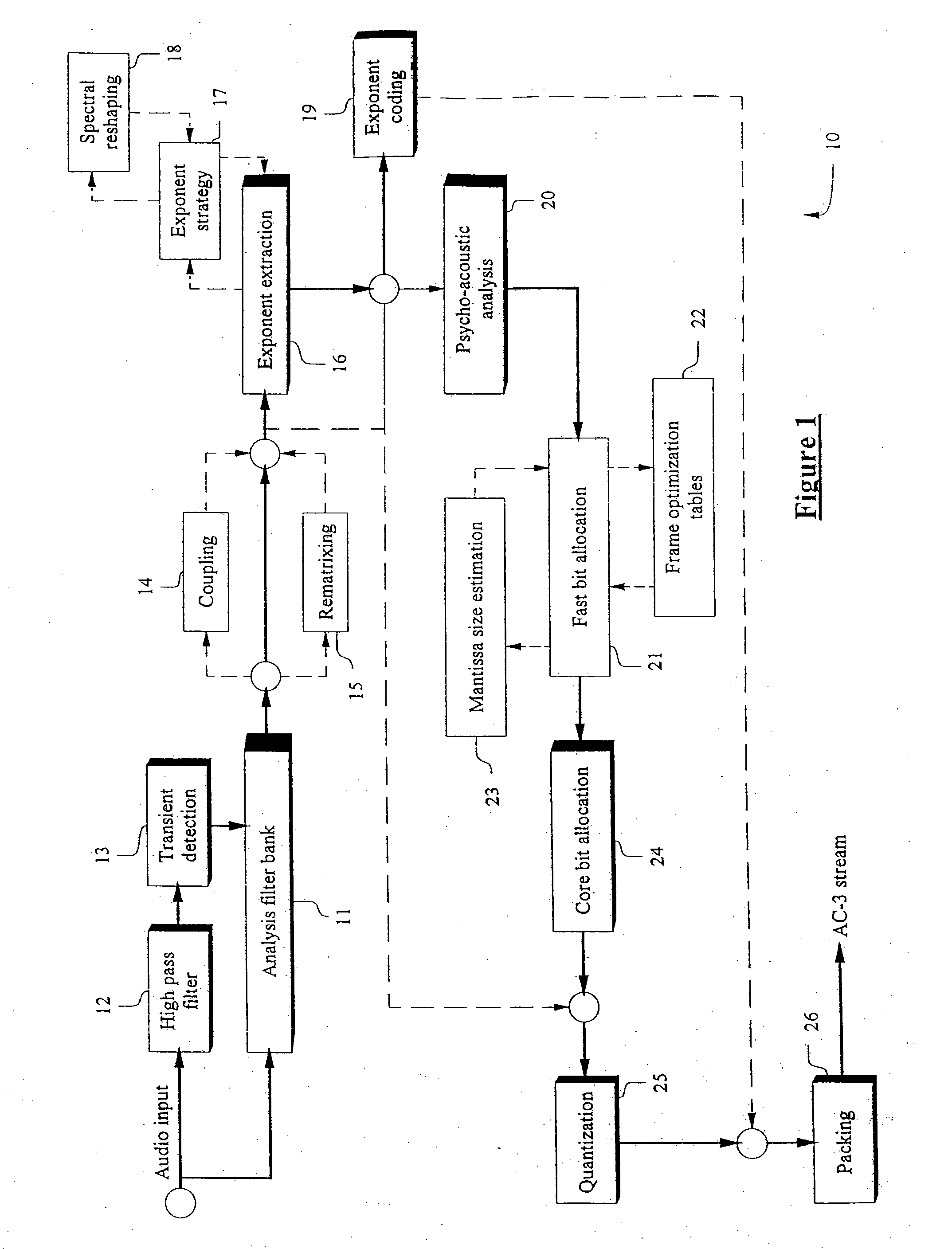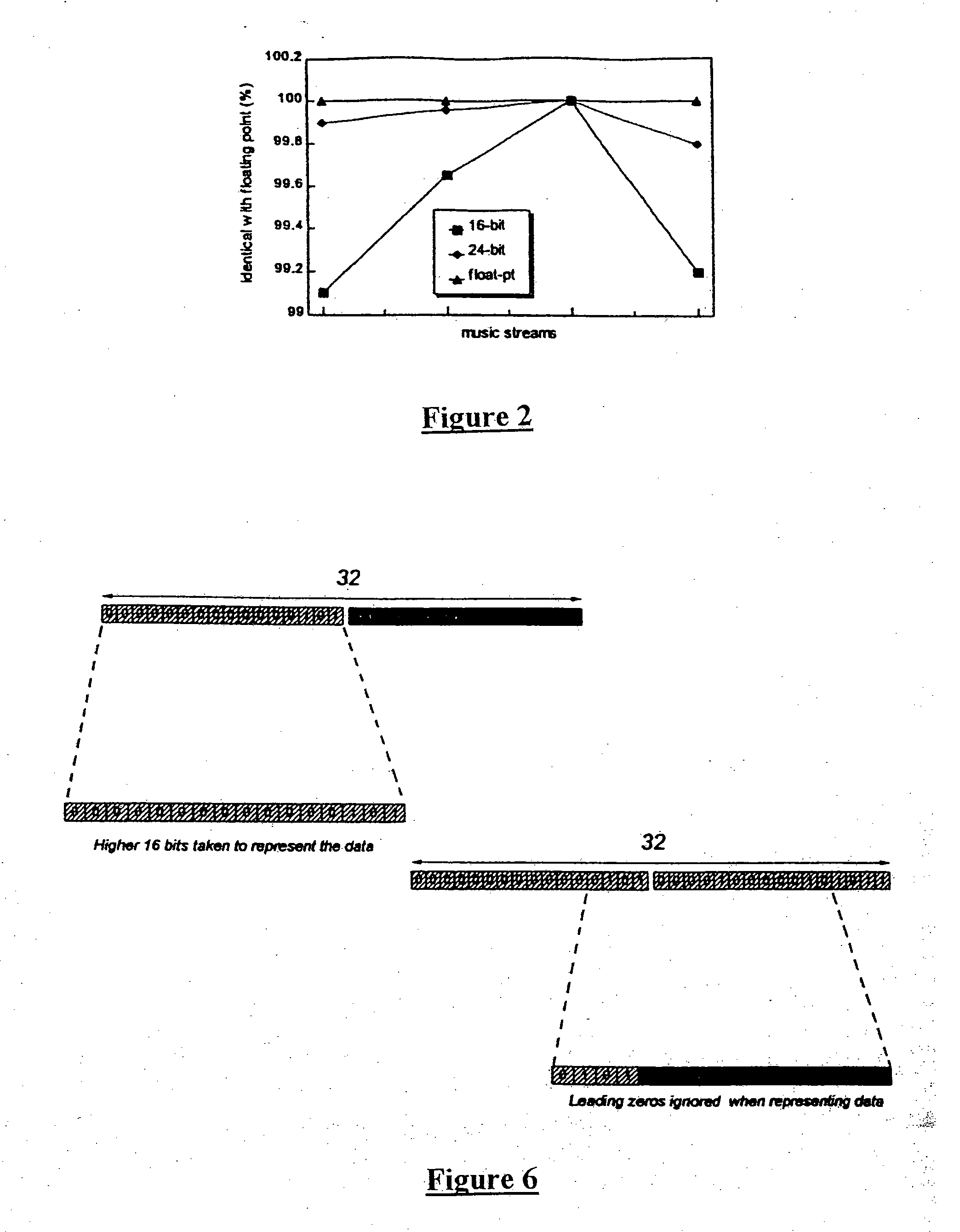Multi-precision technique for digital audio encoder
a digital audio and encoder technology, applied in the field of audio encoders, can solve the problems of high cost of floating point engines, computational complexity, double accuracy of implementation, etc., and achieve the effect of reducing computational complexity and excessively sacrificing quality
- Summary
- Abstract
- Description
- Claims
- Application Information
AI Technical Summary
Benefits of technology
Problems solved by technology
Method used
Image
Examples
Embodiment Construction
[0026] In the following detailed description of the preferred embodiments of the invention, firstly a system-level description of an AC-3 encoder is provided. This serves to explain the overall processes and describe the significance of each processing block in the overall audio compression system.
[0027] After the system level description, the word-length requirements of each processing blocks, where fixed point arithmetic is used, is discussed. This includes the transient-detection, frequency transformation, rematrixing and coupling blocks. By analysis of data gathered through extensive simulation, and statistics derived thence, appropriate word-length requirements for each block are then estimated. In particular, this description deals with the issue of the implementation of the dual-channel AC-3 encoder on a 16-bit processor in a manner such that the processing requirement is not prohibitive and the quality is comparable to implementation on single precision 24-bit processor.
S...
PUM
 Login to view more
Login to view more Abstract
Description
Claims
Application Information
 Login to view more
Login to view more - R&D Engineer
- R&D Manager
- IP Professional
- Industry Leading Data Capabilities
- Powerful AI technology
- Patent DNA Extraction
Browse by: Latest US Patents, China's latest patents, Technical Efficacy Thesaurus, Application Domain, Technology Topic.
© 2024 PatSnap. All rights reserved.Legal|Privacy policy|Modern Slavery Act Transparency Statement|Sitemap



